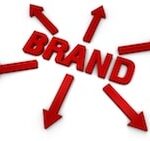Little Playbook of Emotions for Healthcare Branding and Patient Engagement
 Medical practice and hospital marketing professionals have an extremely challenging job on the forward facing frontline of healthcare communications. Suffice to say that it’s a complex task to effectively “speak healthcare” to the public.
Medical practice and hospital marketing professionals have an extremely challenging job on the forward facing frontline of healthcare communications. Suffice to say that it’s a complex task to effectively “speak healthcare” to the public.
But it’s helpful to know that effective medical messaging—from patient conversations to mass media—will nearly always relate to a short list of emotions. Keep this list in mind and the task at hand—healthcare branding, engagement, acceptance—will more readily connect with your audience.
A recently completed study from Creston Unlimited analyzed the emotions involved in making purchases, with only eight “dimensions” in their final playbook. Although their orientation is largely corporate and/or retail, the list is highly applicable in healthcare communications. Creston’s first three categories, along with their thumbnail definitions, illustrate this utility:
PLEASURE (23%) This covers a spectrum from indulgence to something that simply puts a smile on your face: it’s the ability of brands to bring an element of lightness into peoples’ lives.
Applied to healthcare: The term we frequent use in presentations and articles is “happiness.” There’s further elaboration in our previous post, The One and Only Reason People Buy Healthcare. In a word, what a patient is buying is happiness.
This was the single strongest factor in the Creston report. They write: “One dimension—Pleasure—drives almost a quarter of brand choices. So more than anything else, brands enrich people’s lives by putting a smile on their faces.”
CONFIDENCE (17%) Offering a choice that I can trust and feel safe with—functionally, socially and emotionally.
Applied to healthcare: At some level, a patient wants to be assured that a healthcare delivery system—and the physician in particular—are well qualified, experienced and skilled in providing the needed solution. In short, various elements of branding that collectively communicate that trust, authority and assurance.
STATUS (14%) Allowing me to exercise my discernment—either to please myself, or to impress others.
Applied to healthcare: At least in part, we see “status” as an expression of “happiness.” Nevertheless, an example of this concept can easily be drawn from cosmetic procedures, especially those related to personal appearance. We listed Status as #2 in our ranking of reasons to brand your healthcare organization.
You’ll find the lengthy Creston study—and all eight “dimensions"—to be worthwhile reading (here). Although the task of branding (and influencing purchase decisions) is a complex process, only a few emotions are the important elements of influence.
Related Articles:
The Elusive Patient Experience: Are You Wasting Money Trying to Hit the Wrong Target?
Little Places Your Healthcare Brand Can Let You Down Big Time
Building An Emotion-Based Marketing Campaign
Your Brand Isn't What You Say - It Is Who You Are.
Healthcare Branding: Answering the All-Important “Why You” Question









